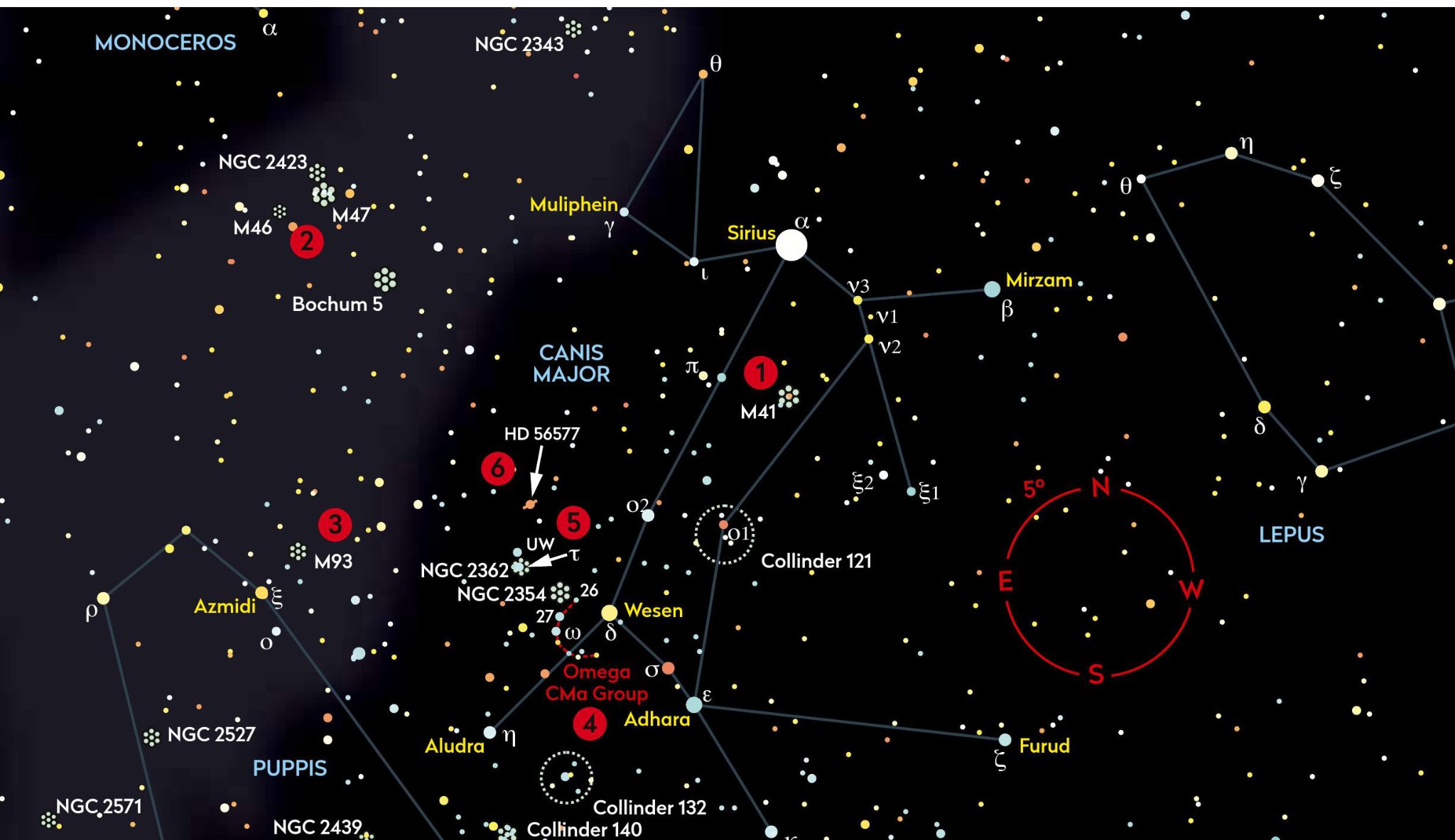This month we’re off to a dog show, finding the best in class in Canis Major

1. M41
Recommended equipment: 10×50
This open cluster is bright enough for you to see it with your naked eye in a transparent sky. It is 4° south of mag. –1.1 Sirius (Alpha (α) Canis Majoris) and is large enough to be an obvious cluster of stars in 10×50 binoculars. Using averted vision at a dark site, you should be able to resolve up to 10 of the brighter stars against the background glow of fainter members.
2. M46/47
Recommended equipment: 10×50
M46 and M47 offer contrasting examples of how open clusters can appear in small binoculars; you will find them 5° south of mag. +3.9 Alpha (α) Monocerotis. The 1,600-lightyear-distant M47 is large and loose, but although M46 appears to be a similar size, it is actually much larger, richer and more compact. It is more than three times as distant at 5,500 lightyears and you probably won’t be able to resolve any of its stars at all.
3. M93
Recommended equipment: 15×70
If you place mag. +3.3 Azmidi (Xi (ξ) Puppis) at the southeast of the field of view, M93 should appear near the centre of the field. M93 is a bright, rich, wedge-shaped cluster in which some 25–30 stars are visible in 15×70 binoculars, against a glowing backdrop of fainter stars. M93 is unusual in that, unlike most open clusters which are sparser at the periphery, it is the centre of this cluster that is sparse.
4. The Omega CMa Group
Recommended equipment: 10×50
Mag. +4.0 Omega (ω) Canis Majoris lies 1.5° east of mag. +1.8 Wezen (Delta (β) Canis Majoris). Note that it is a brilliant white compared to the fainter yellowish star just to the south. These two are part of a very pretty C-shaped string of stars of varying colour that extends from mag. +5.9 26 CMa in the north, through mag. +4.4 27 and Omega CMa, to a mag. +5.5 yellow star 1° south of Wezen.
5. UW Canis Majoris
Recommended equipment: 10×50
Look 2.7° northeast of Wezen for a pair of dazzlingly blue stars. The brighter one is mag. +4.4 Tau (τ) Canis Majoris, but more interesting is the fainter mag. +4.8 UW Canis Majoris, less than 0.5° north of Tau CMa. UW is a blue supergiant whose brightness falls by half a magnitude every 4.39 days as it is eclipsed by a fainter companion.
6. The ‘Winter Albireo’
Recommended equipment: 15×70
Did you know that there is a winter equivalent of one of summer’s popular double-star showpieces? The ‘Winter Albireo’ is HD 56577, 1.7° north of Tau CMa. With a separation of 27 arcseconds, it is a bit tighter than its summer cousin, so use 15x70s to separate the mag. +4.8 orange and mag. +5.8 white components, contrasting beautifully with the blue of UW CMa in the same field of view.